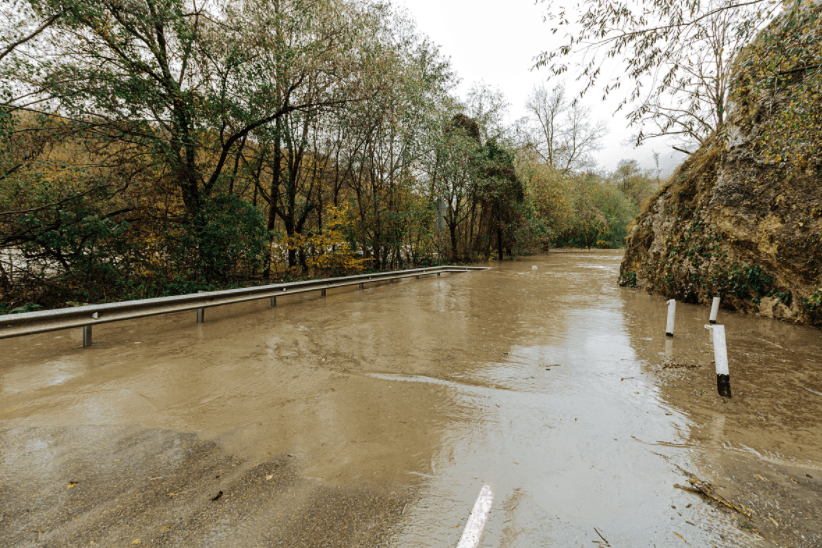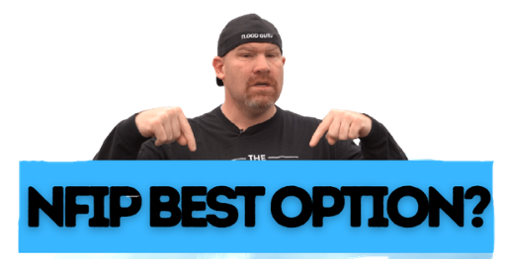The Flood Insurance Guru Podcast Episode 6: What is NFIP 2.0?
June 19th, 2019
3 min read
By Chris Greene
-png.png)
What's new in the federal flood insurance?
Flood Insurance Rates
The flood rates in our country are getting out of hand. It’s almost like a flash flood, uncontrollable and shocking!
-png.png)
Let me give you an insight, before when you look at the flood map and flood zone areas, there’s a big blue area called Flood Zone A or maybe Flood Zone AE. Now, the closer you get to the center of this zone, your rate will increase. Go further away from the zone, the lower the rates will be. Put simply, the farther you are from the blue, the less green you lose.

NFIP 2.0 however will treat this differently in their program update. Let’s say that we have two houses with the same crawl space, foundation, whatnots, and are both in Flood Zone AE. Basically they will generally have the same rate. On this update however, this wouldn’t be the case.
Continuous Coverage Rule
When you cancel a NFIP program policy altogether and go to the private market, you will lose continuous coverage. Taking out a policy means that you have to take out whatever today’s rate is. Before, you can do policy transfers from one homeowner to the next (generally what “grandfathering” is). Continuous coverage ultimately protects your rate.
This will go away once the NFIP 2.0 goes live, meaning continuous coverage penalty will be removed and NFIP will recognize everyone who had a private flood insurance policy in the last ten years who decided to come over to the National Flood Insurance Program.

New Flood Mapping Rule
We've covered in our previous episode the type of flood zones determined by the NFIP. Before, NFIP determines risk of flooding on properties depending on how close they are to special flood hazard zones, like Flood Zone A (which has undetermined base flood elevation) or AE as mentioned before. This is how NFIP determines the risk rating and assessment for the given property when it comes to flooding.
Now, the risk rating 2.0 will approach each property based on their individual address. Such flood map ruling means that there will be better risk determination on homes and hopefully, eliminate the requirement for property owners to get an elevation certificate. Again, this may save you more money since an elevation certificate can cost around $500 to $700 across the country (a real pain in the wallet if you ask me).

Flood Insurance
The NFIP 2.0 update will also mean a more difficult process for getting flood insurance policies especially if you’re in the list of repetitive flood loss. If you are in the coastal area such as Texas, Louisiana, or Florida, it means that you’ll be experiencing a drastic rate increase for your flood insurance as well.
Grandfathering Rule
No, this doesn’t talk about you being the best grandparent and spoiling your grandchildren which is basically the golden rule of being a grandparent. This rule pertains to a property — like your barn — that’s in a flood zone that no longer exists, so in order to fix this, the property is backdated to a different flood map. NFIP 2.0 will remove the Grandfathering Rule also since FEMA are not collecting enough premium to offset the risk — something that they've been trying to do away with.
Accrual Rate
Not to be bad news bears here, but NFIP 2.0 will also slowly take away subsidized flood insurance rates. Every year, FEMA has been subsidizing around 50% of some rates over the last twenty, thirty years. If your average flood insurance premium rate is around $1250, that should’ve been $2500 without FEMA subsidizing it which will be the case with NFIP 2.0. Well, no more discounts for your flood insurance rate then.

It’s not all negatives however. We have to look at the positive implications of the NFIP 2.0 as well. Since there will be a more accurate rating structures. It’s very beneficial to those who are paying higher premiums despite being farther away from high risk flood zones or ones at the edge of it. If you live in a home in low-risk flood zones or Flood Zone X — like Toledo, Ohio and Houston, Texas. Since Houston is closer to the coasts, they’ll definitely have much different rates now compared to policyholders Toledo due to their closeness to the coast.
This is a quick rundown for the National Flood Insurance Program 2.0. These changes definitely have positive and negative impacts for homeowners, so it’s better to be prepared for it. We’ll cover more on these updates with our future episodes!
We have an education background in flood mitigation, so if you have any questions on NFIP 2.0, accrual rates, flood risks and flood maps, your flood rates and flood insurance, or anything at all about flood we’d like to help you settle and mitigate your property for long term.
Feel free to call us or watch more of our education flood videos on YouTube by clicking our links below, and remember, flood education and awareness make you prepared when crap happens:




